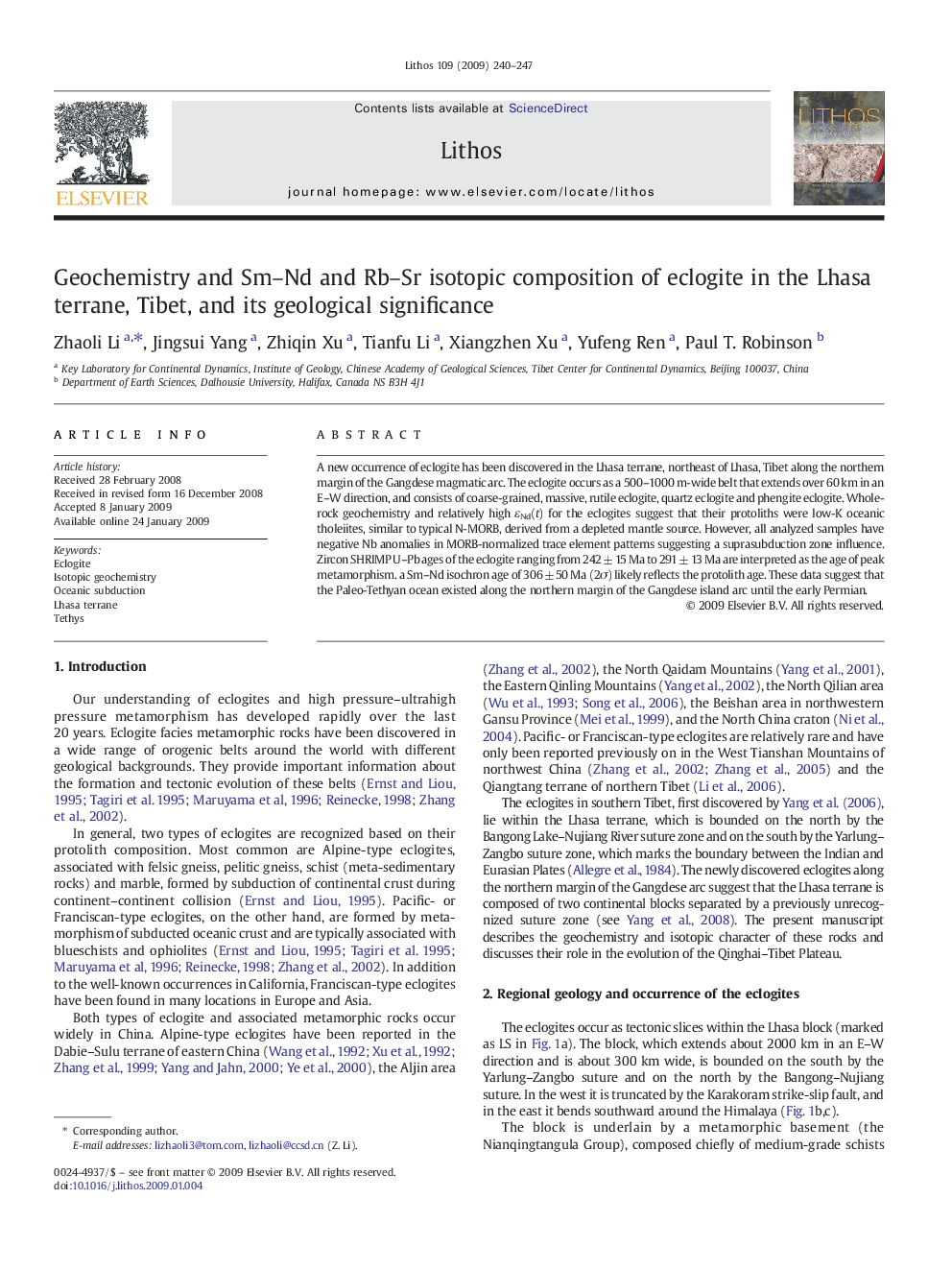| Article ID | Journal | Published Year | Pages | File Type |
|---|---|---|---|---|
| 4717409 | Lithos | 2009 | 8 Pages |
Abstract
A new occurrence of eclogite has been discovered in the Lhasa terrane, northeast of Lhasa, Tibet along the northern margin of the Gangdese magmatic arc. The eclogite occurs as a 500-1000 m-wide belt that extends over 60 km in an E-W direction, and consists of coarse-grained, massive, rutile eclogite, quartz eclogite and phengite eclogite. Whole-rock geochemistry and relatively high εNd(t) for the eclogites suggest that their protoliths were low-K oceanic tholeiites, similar to typical N-MORB, derived from a depleted mantle source. However, all analyzed samples have negative Nb anomalies in MORB-normalized trace element patterns suggesting a suprasubduction zone influence. Zircon SHRIMP U-Pb ages of the eclogite ranging from 242 ± 15 Ma to 291 ± 13 Ma are interpreted as the age of peak metamorphism. a Sm-Nd isochron age of 306 ± 50 Ma (2Ï) likely reflects the protolith age. These data suggest that the Paleo-Tethyan ocean existed along the northern margin of the Gangdese island arc until the early Permian.
Related Topics
Physical Sciences and Engineering
Earth and Planetary Sciences
Geochemistry and Petrology
Authors
Zhaoli Li, Jingsui Yang, Zhiqin Xu, Tianfu Li, Xiangzhen Xu, Yufeng Ren, Paul T. Robinson,
